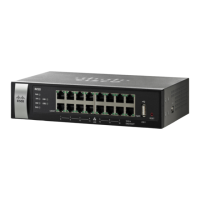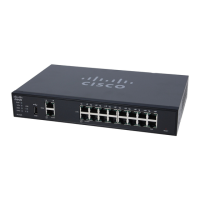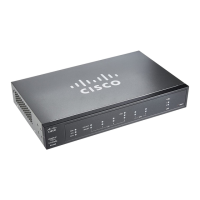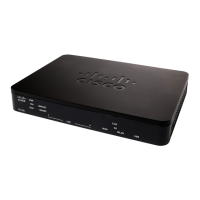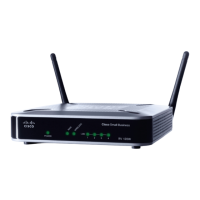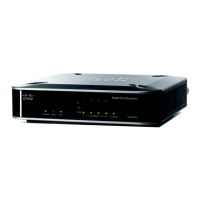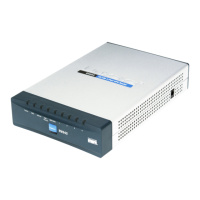Setup
DMZ Host
34 Cisco RV320/RV325 Administration Guide
3
To configure NTP and time settings, choose Setup > Time.
• Time Zone—Time zone relative to Greenwich Mean Time (GMT).
• Daylight Savings Time—Enable or disable the adjustment for daylight
savings time. Enter the start date in the From fields and enter the stop date
in the To fields.
• Set Date and Time—Auto enables the NTP server. If you chose Auto, enter
the fully qualified NTP Server name or IP address. Manual enables setting
the date and time locally, and uses the device clock to maintain the time. If
you chose Manual, enter the Date and Time.
DMZ Host
DMZ Host allows one host in the LAN to be exposed to the Internet to use services
such as Internet gaming and video conferencing. Access to the DMZ Host from the
Internet can be restricted by using firewall access rules.
To configure a DMZ host, enter a DMZ Private IP Address and click Save.
(Port) Forwarding
Port forwarding allows public access to services on network devices on the LAN
by opening a specific port or port range for a service, such as FTP. Port triggering
opens a port range for services such as Internet gaming that use alternate ports to
communicate between the server and the LAN host.
Configuring Port Forwarding
When users make requests for services on your network, the device forwards
those requests to your servers based on the port forwarding parameters. Any
services not specified are denied access. For example, when port number 80
(HTTP) is forwarded to the IP address 192.168.1.2, all HTTP requests on the
interface are forwarded to 192.168.1.2. All other traffic is denied, unless
specifically allowed by another entry.
Use this function to establish a web server or FTP server. Make sure that you enter
a valid IP address. (To run an Internet server, it might be necessary to use a static
IP address.) For added security, outside users are able to communicate with the
server, but they are not allowed to connect to network devices.
